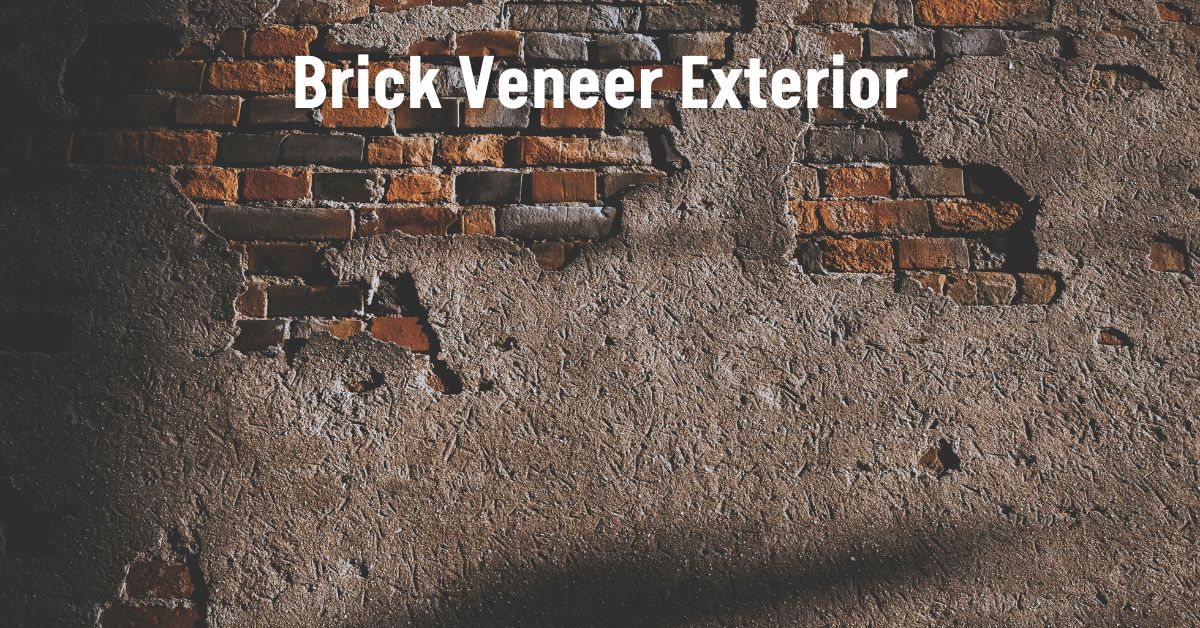Brick veneer exterior is a popular choice for homeowners looking to enhance the aesthetics and durability of their homes. Unlike solid brick construction, which involves the use of full-sized bricks, brick veneer consists of a thin layer of brick installed over a structural wall. This article explores the various aspects of brick veneer exterior, including its benefits, installation process, maintenance tips, cost considerations, and more.
Benefits of Brick Veneer Exterior
Durability and Longevity
Brick veneer offers exceptional durability, capable of withstanding harsh weather conditions, including strong winds, rain, and even hail. With proper installation and maintenance, brick veneer can last for decades, providing long-term protection for your home’s exterior.
Aesthetic Appeal
One of the primary reasons homeowners opt for brick veneer exterior is its timeless and elegant appearance. Brick offers a classic look that complements a variety of architectural styles, from traditional to contemporary. Additionally, brick comes in a wide range of colors and textures, allowing for customization to suit your preferences.
Energy Efficiency
Brick veneer provides excellent thermal insulation, helping to regulate indoor temperatures and reduce energy consumption. By minimizing heat transfer through walls, brick veneer can contribute to lower heating and cooling costs year-round, making it a sustainable and cost-effective choice for homeowners.
Installation Process of Brick Veneer Exterior
Preparation and Planning
Before installing brick veneer, proper preparation is essential to ensure a successful outcome. This includes inspecting the existing wall surface for any damage or defects and addressing any issues before proceeding. Additionally, careful planning is necessary to determine the layout and pattern of the bricks, as well as the type of mortar to be used.
Installation Steps
The installation of brick veneer typically involves the following steps:
- Surface Preparation: Cleaning and priming the existing wall surface.
- Layout and Design: Marking the layout of the bricks and applying mortar.
- Brick Installation: Placing the bricks onto the wall surface and ensuring proper alignment.
- Grouting: Filling the gaps between the bricks with mortar.
- Finishing Touches: Smoothing the mortar joints and cleaning any excess material.
Maintenance Tips for Brick Veneer Exterior
Cleaning Techniques
Regular cleaning is essential to keep brick veneer exteriors looking their best. This can be done using a mild detergent and water solution, applied with a soft brush or sponge. Avoid using abrasive cleaners or high-pressure washing, as these can damage the brick surface.
Repair and Restoration
Over time, brick veneer may develop cracks or other signs of wear and tear. Prompt repair and restoration are necessary to prevent further damage and maintain the integrity of the structure. This may involve replacing damaged bricks, repointing mortar joints, or applying sealant to protect against moisture infiltration.
Cost Considerations
When considering brick veneer exterior for your home, it’s essential to factor in both the initial investment and long-term savings. While brick veneer may have a higher upfront cost compared to other exterior materials, its durability and energy efficiency can result in lower maintenance and utility expenses over time.
Comparisons with Other Exterior Materials
Brick vs. Vinyl Siding
While vinyl siding is a popular alternative to brick veneer, it lacks the durability and aesthetic appeal of brick. Brick veneer offers superior longevity and can increase the resale value of your home, making it a more cost-effective choice in the long run.
Brick vs. Stucco
Stucco is another common exterior finish, known for its versatility and affordability. However, brick veneer offers greater durability and resistance to moisture, making it a preferred option for homeowners seeking a low-maintenance solution.
Environmental Impact
Brick is a sustainable building material, with minimal environmental impact compared to other options. Brick veneer can be recycled and reused, reducing waste and conserving natural resources. Additionally, brick offers excellent thermal mass properties, reducing the need for energy-intensive heating and cooling systems.
Design Options and Customization
Brick veneer provides endless design possibilities, with a variety of colors, textures, and patterns available to suit any architectural style. Whether you prefer a traditional red brick facade or a more modern, sleek finish, brick veneer can be customized to match your vision.
Common Issues and Solutions
Cracking and Moisture Problems
One common issue with brick veneer is the development of cracks, which can compromise its structural integrity and allow moisture to penetrate. Proper installation and maintenance are crucial to preventing these issues, including ensuring adequate drainage and sealing vulnerable areas.
Pest Infestation
Brick veneer can also be susceptible to pest infestation, particularly from insects such as termites or ants. Regular inspections and treatment can help mitigate this risk, as well as sealing any entry points to prevent access to the interior of the wall.
Safety Considerations
Fire Resistance
Brick veneer offers excellent fire resistance, providing added protection for your home and family. Unlike combustible materials such as wood or vinyl, brick does not contribute to the spread of flames, making it a safer choice in areas prone to wildfires or other fire hazards.
Structural Integrity
Brick veneer adds structural strength to a building, enhancing its overall stability and durability. When properly installed, brick veneer can withstand significant loads and forces, protecting against damage from impacts or seismic activity.
Case Studies and Examples
To illustrate the benefits of brick veneer exterior, consider the following case studies:
- Residential Home: A homeowner opts for brick veneer exterior during a renovation project, enhancing the curb appeal and resale value of their property.
- Commercial Building: An architect specifies brick veneer for a new office building, combining aesthetics with durability and sustainability.
